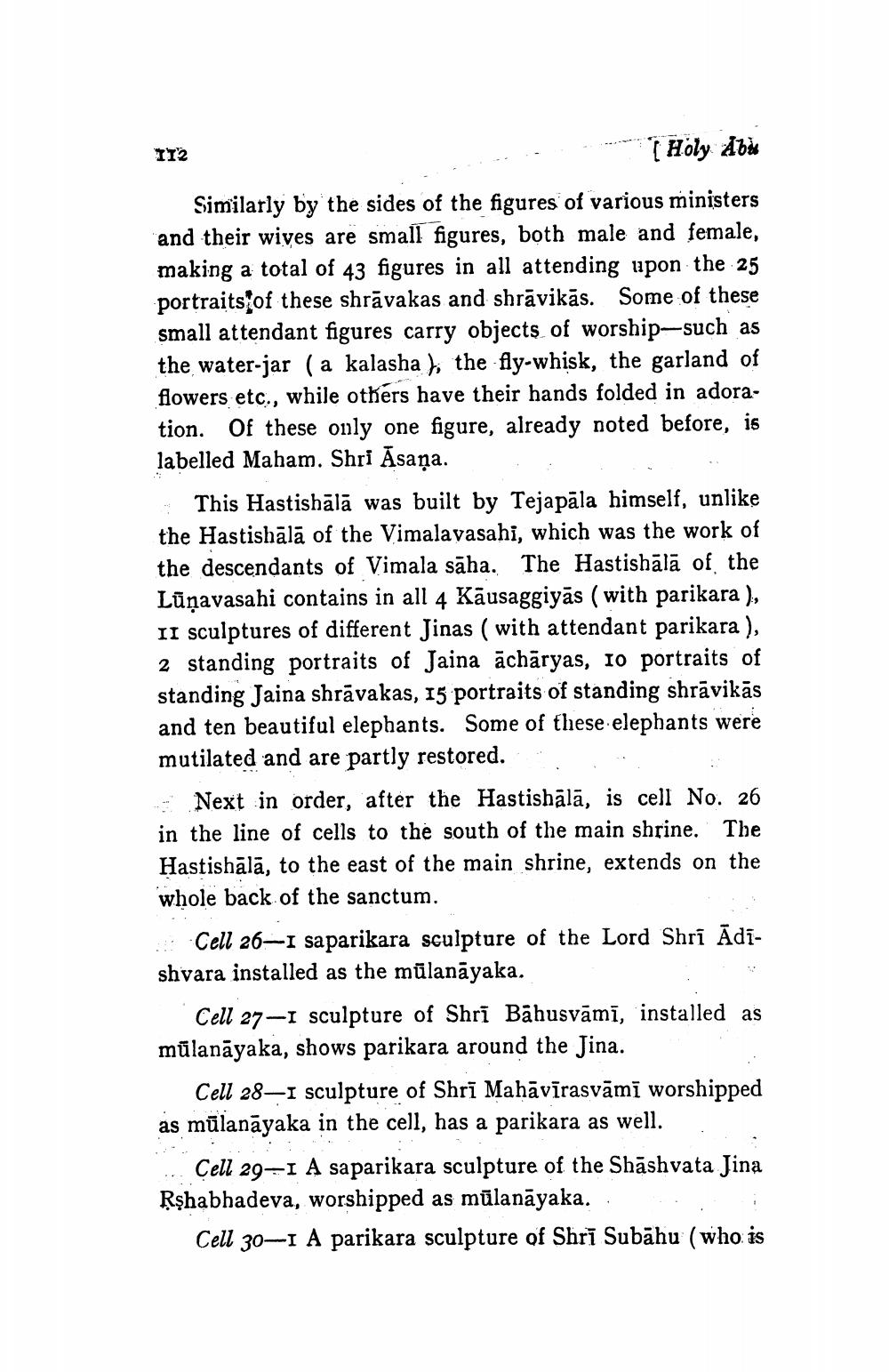________________
112
[Holy Abu
Similarly by the sides of the figures of various ministers and their wives are small figures, both male and female, making a total of 43 figures in all attending upon the 25 portraits of these shravakas and shrāvikās. Some of these small attendant figures carry objects of worship-such as the water-jar (a kalasha), the fly-whisk, the garland of flowers etc., while others have their hands folded in adoration. Of these only one figure, already noted before, is labelled Maham. Shri Asana.
This Hastishālā was built by Tejapāla himself, unlike the Hastishālā of the Vimalavasahi, which was the work of the descendants of Vimala saha. The Hastishālā of the Lūṇavasahi contains in all 4 Kausaggiyās (with parikara), II sculptures of different Jinas (with attendant parikara), 2 standing portraits of Jaina acharyas, 10 portraits of standing Jaina shravakas, 15 portraits of standing shrāvikās and ten beautiful elephants. Some of these elephants were mutilated and are partly restored.
Next in order, after the Hastishālā, is cell No. 26 in the line of cells to the south of the main shrine. The Hastishālā, to the east of the main shrine, extends on the whole back of the sanctum.
Cell 26-1 saparikara sculpture of the Lord Shrī Ādīshvara installed as the mulanāyaka.
Cell 27-1 sculpture of Shri Bāhusvāmī, installed as mulanayaka, shows parikara around the Jina.
Cell 28-1 sculpture of Shri Mahāvīrasvāmī worshipped as mulanayaka in the cell, has a parikara as well.
Cell 29-1 A saparikara sculpture of the Shashvata Jina Rşhabhadeva, worshipped as mūlanāyaka.
Cell 30-1 A parikara sculpture of Shri Subahu (who is




